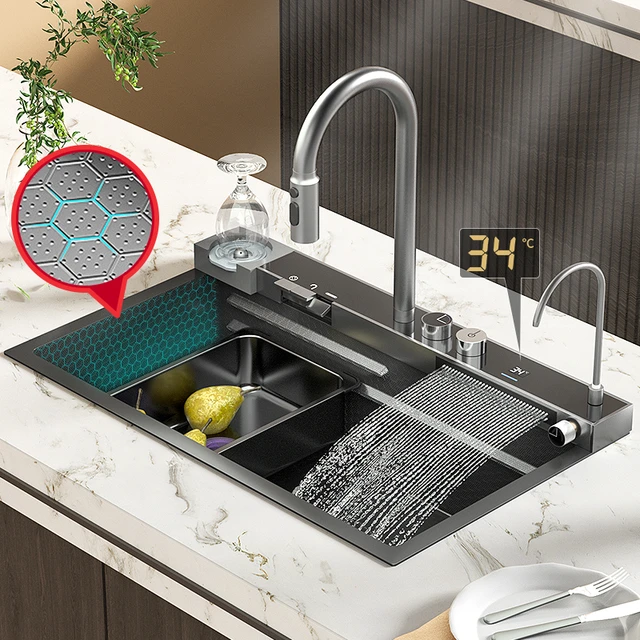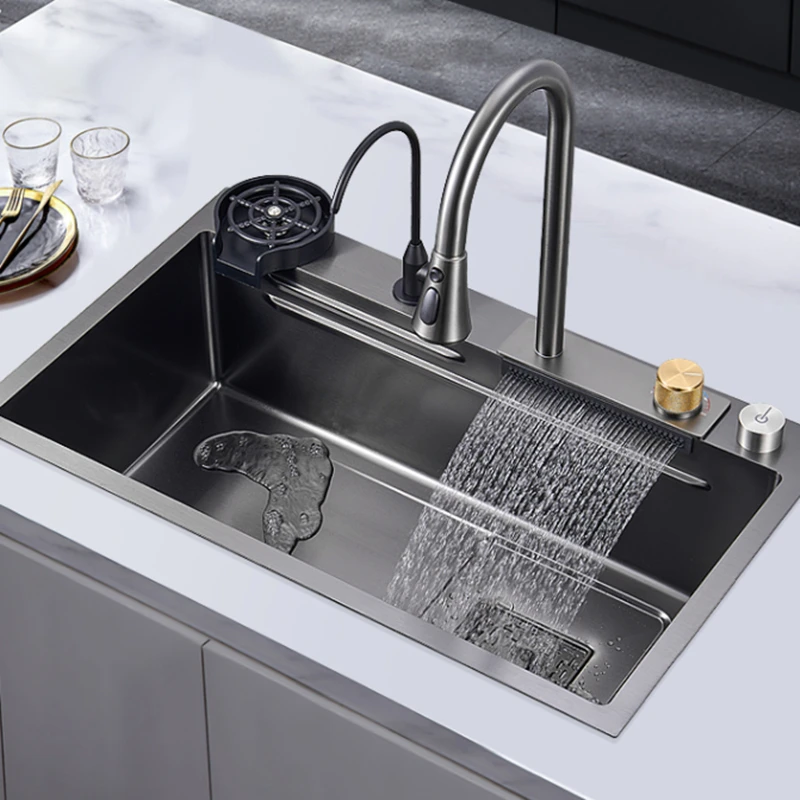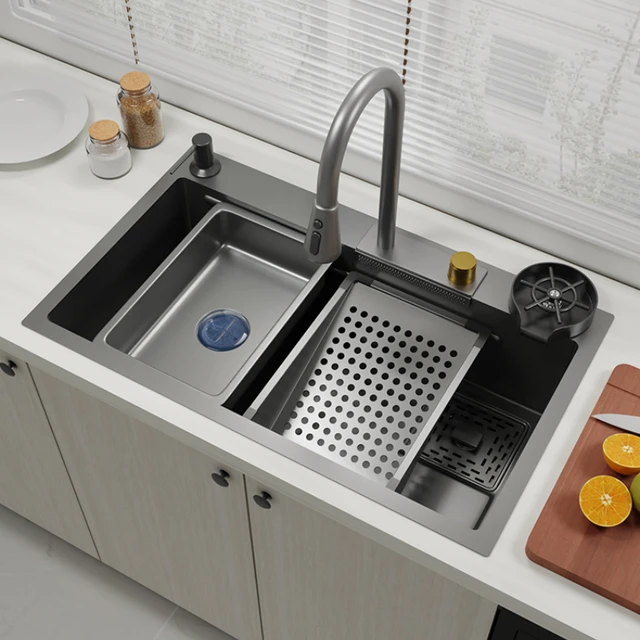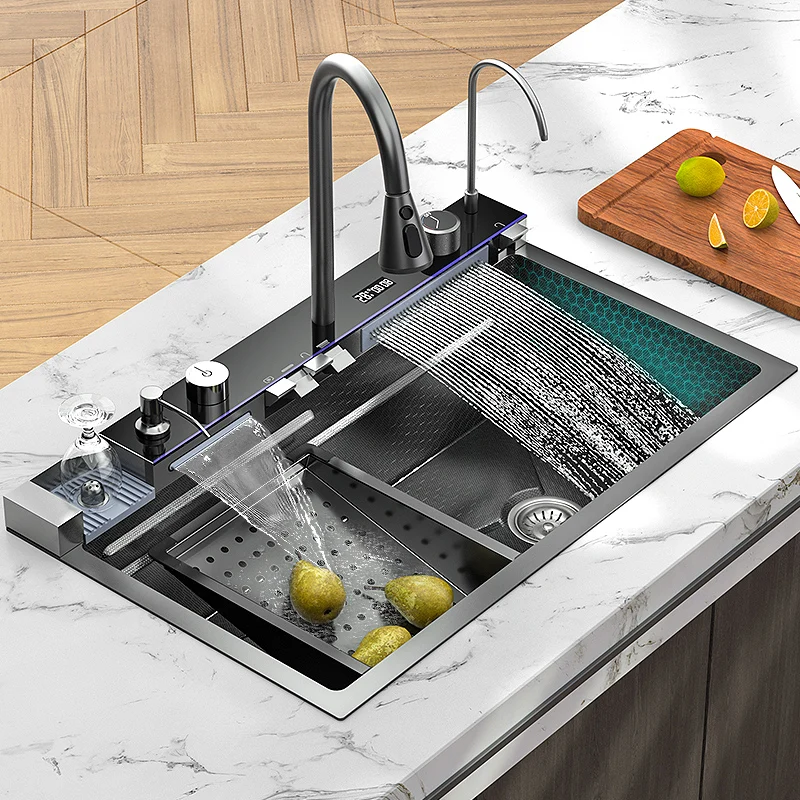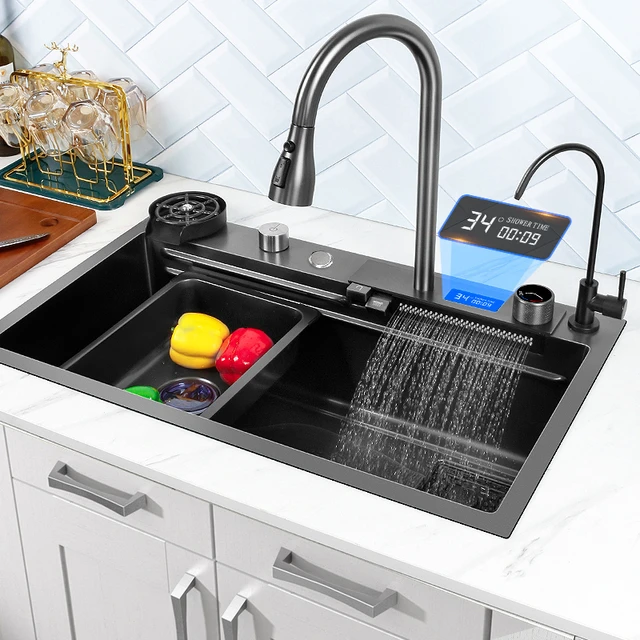 Introduction:
Introduction:
A leak under the kitchen sink is a common household problem that can cause inconvenience and potential damage if left unaddressed. This comprehensive article will guide you through the causes, detection, and solutions for a leak under the kitchen sink. By understanding the potential sources of the leak and taking appropriate measures, you can easily resolve this issue and prevent further damage to your kitchen.
Materials and Types of Kitchen Sink
We will explore the different materials commonly used for kitchen sinks and discuss their features and advantages.
Stainless Steel:
Stainless steel sinks are the most popular choice due to their durability, affordability, and versatility.
They are resistant to corrosion, stains, and heat, making them easy to clean and maintain.
Stainless steel sinks are available in different finishes, such as brushed or polished, to match various kitchen styles.
Porcelain:
Porcelain sinks, also known as enamel or ceramic sinks, have a glossy and smooth surface.
They offer a classic and elegant look, making them a popular choice for traditional or farmhouse-style kitchens.
Porcelain sinks are resistant to stains, scratches, and heat, but they can chip or crack if heavy objects are dropped on them.
Composite Granite:
Composite granite sinks are made from a mixture of granite stone dust and acrylic or resin.
They offer a durable and stylish option with a natural stone-like appearance.
Composite granite sinks are resistant to scratches, heat, stains, and fading. They are also quieter compared to stainless steel sinks.
Cast Iron:
Cast iron sinks are made by coating a layer of enamel over a cast iron base.
They are known for their durability and heat resistance, making them suitable for heavy-duty use.
Cast iron sinks are available in a variety of colors and finishes, adding a touch of vintage flair to kitchen designs.
Fireclay:
Fireclay sinks are made from a combination of clay and glaze, which is fired at high temperatures.
They offer a smooth and glossy surface that is resistant to stains, scratches, and fading.
Fireclay sinks provide a classic and timeless look, typically found in farmhouse-style kitchens.
Copper:
Copper sinks are known for their unique and rustic appearance, adding a warm and luxurious touch to kitchen design.
They are highly durable, antimicrobial, and resistant to corrosion and stains.
Copper sinks develop a natural patina over time, enhancing their beauty and character.
Acrylic:
Acrylic sinks are made of plastic material, which makes them lightweight and easy to install.
They are available in a wide range of colors and styles, offering versatility in design choices.
Acrylic sinks are budget-friendly and resistant to stains, scratches, and fading.
Each type of kitchen sink material has its own set of characteristics, so it’s important to consider your needs, budget, and style preferences when choosing the right material for your kitchen sink.
Styles of Kitchen Sinks
Kitchen sinks come in various styles, each designed to suit different functional and aesthetic preferences. The choice of sink style depends on factors such as kitchen layout, personal preferences, and the desired look and functionality. In this article, we will explore different styles of kitchen sinks and discuss their features and advantages.
Undermount Sink:
Undermount sinks are installed beneath the countertop, creating a seamless and streamlined look.
They are attached to the underside of the countertop with clips or brackets, leaving the edges of the sink hidden.
Undermount sinks are easy to clean since there are no edges or crevices for debris to accumulate.
They provide a clean and modern aesthetic that complements various kitchen styles.
Top Mount Sink:
Top mount kitchen sink, also known as drop-in sinks, are installed by dropping the sink into a hole cut in the countertop.
The sink’s rim rests on top of the countertop, creating a visible edge around the sink.
Top mount sinks are relatively easier to install and can be replaced or upgraded without replacing the entire countertop.
They are available in a wide range of materials, sizes, and styles to suit different kitchen designs.
Farmhouse Sink:
Farmhouse sinks, also called apron front sinks, have a large and deep basin with a visible front panel.
The front panel extends beyond the edge of the countertop, providing a classic and rustic look.
Farmhouse sinks are typically made from materials such as fireclay or porcelain, adding to their traditional appeal.
They offer ample space for washing large pots and pans and are a popular choice for country or farmhouse-style kitchens.
Causes of a Leak Under the Kitchen Sink:
Loose Connections:
Over time, the connections between the pipes, joints, or fittings under the sink can become loose, leading to leaks.
Damaged or Worn Out Seals:
Seals around the sink drain or faucet can deteriorate, causing water to seep through.
Cracked or Damaged Pipes:
Age, wear, or external factors can cause pipes to develop cracks or damage, resulting in leaks.
Clogged Drains:
Blocked or clogged drains can lead to water backup, putting pressure on the pipes and causing leaks.
Detecting a Leak Under the Kitchen Sink:
Look for Visible Signs:
Check for water puddles, dampness, or discoloration under the sink cabinet.
Listen for Dripping Sounds:
If you hear a constant dripping sound, it indicates a leak.
Inspect for Mold or Mildew:
The presence of mold or mildew under the sink can indicate water leakage.
Observe Water Meter:
Turn off all water sources and check the water meter. If the reading changes, it suggests a hidden leak.
Solutions for Fixing a Leak Under the Kitchen Sink:
Tighten Connections:
Use a wrench or pliers to tighten any loose connections or fittings under the sink.
Replace Seals:
If the seals around the sink drain or faucet are damaged, replace them with new ones.
Repair or Replace Cracked Pipes:
For cracked or damaged pipes, consider replacing the affected sections or hiring a professional plumber for repairs.
Clear Clogged Drains:
Use a plunger, drain snake, or chemical drain cleaner to clear clogs and restore proper water flow.
Prevention Tips to Avoid Future Leaks:
Regular Maintenance:
Inspect the pipes, connections, and seals under the sink periodically to identify and address any issues early on.
Avoid Overstuffing
Do not overcrowd the space under the sink, as it can put pressure on the pipes and cause leaks.
Properly Dispose of Grease and Food Waste:
Avoid pouring grease or disposing of large food particles down the drain, as they can lead to clogs and subsequent leaks.
Be Mindful of Water Pressure:
High water pressure can strain pipes and cause leaks. Consider installing a pressure regulator to maintain a safe level of water pressure.
When to Seek Professional Help:
If you are unable to locate the source of the leak or if the problem persists after attempting DIY solutions, it is best to consult a professional plumber.
A plumber can accurately identify and fix the underlying cause of the leak to prevent further damage.
Conclusion:
A leak under the kitchen sink can cause significant inconvenience and potential damage if not addressed promptly. By understanding the causes, detecting the issue, and implementing appropriate solutions, you can easily resolve the leak and prevent future occurrences.
Regular maintenance, proper disposal practices, and mindful water usage can help prevent leaks from happening. However, if you encounter persistent leaks or are unable to identify the source, it is recommended to seek professional assistance. By taking proactive measures, you can ensure a leak-free kitchen and maintain the functionality and integrity of your plumbing system.
